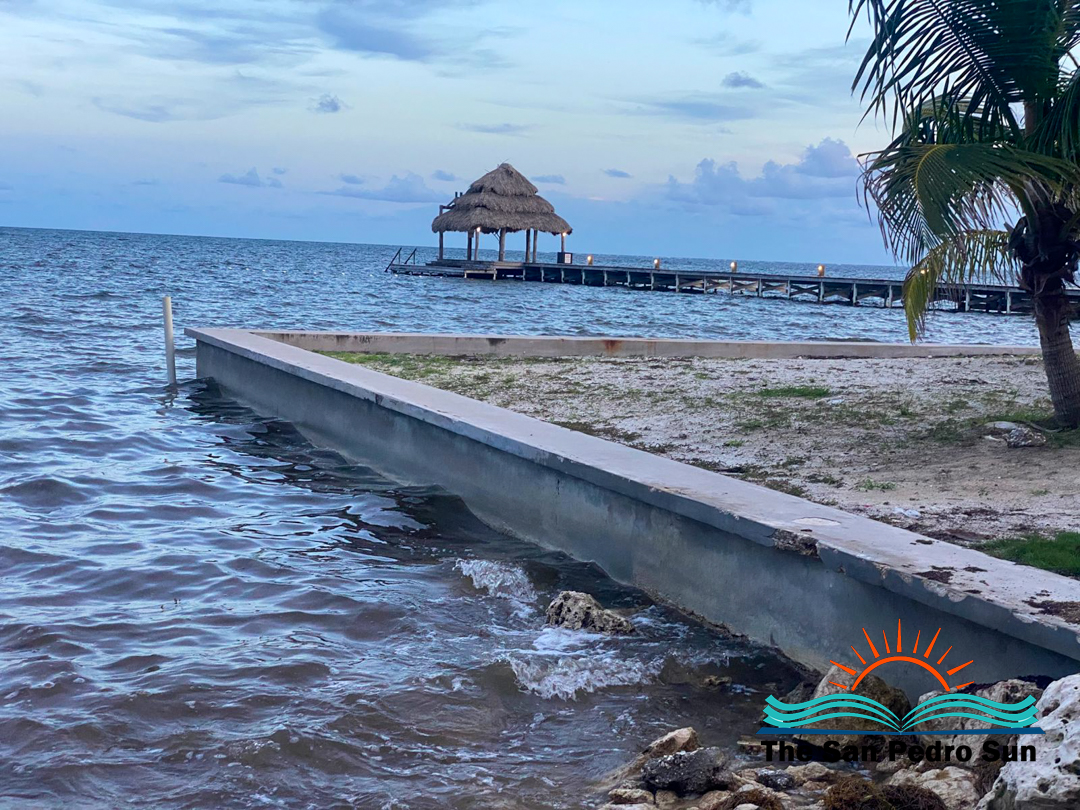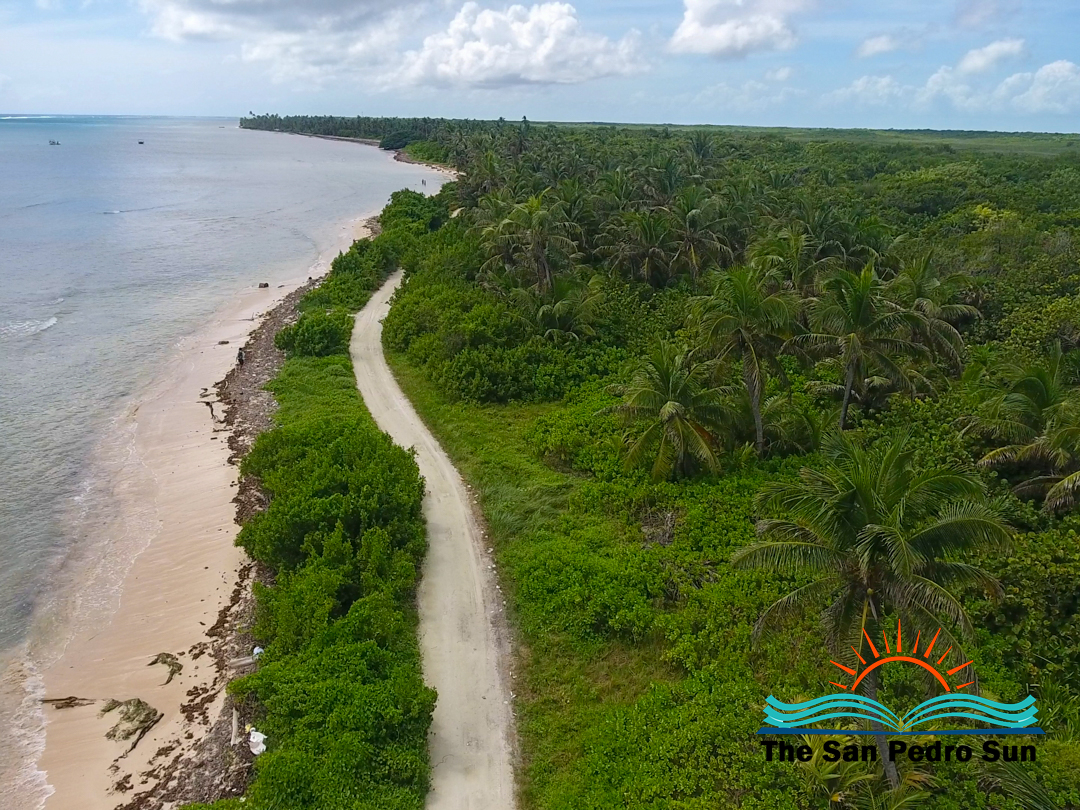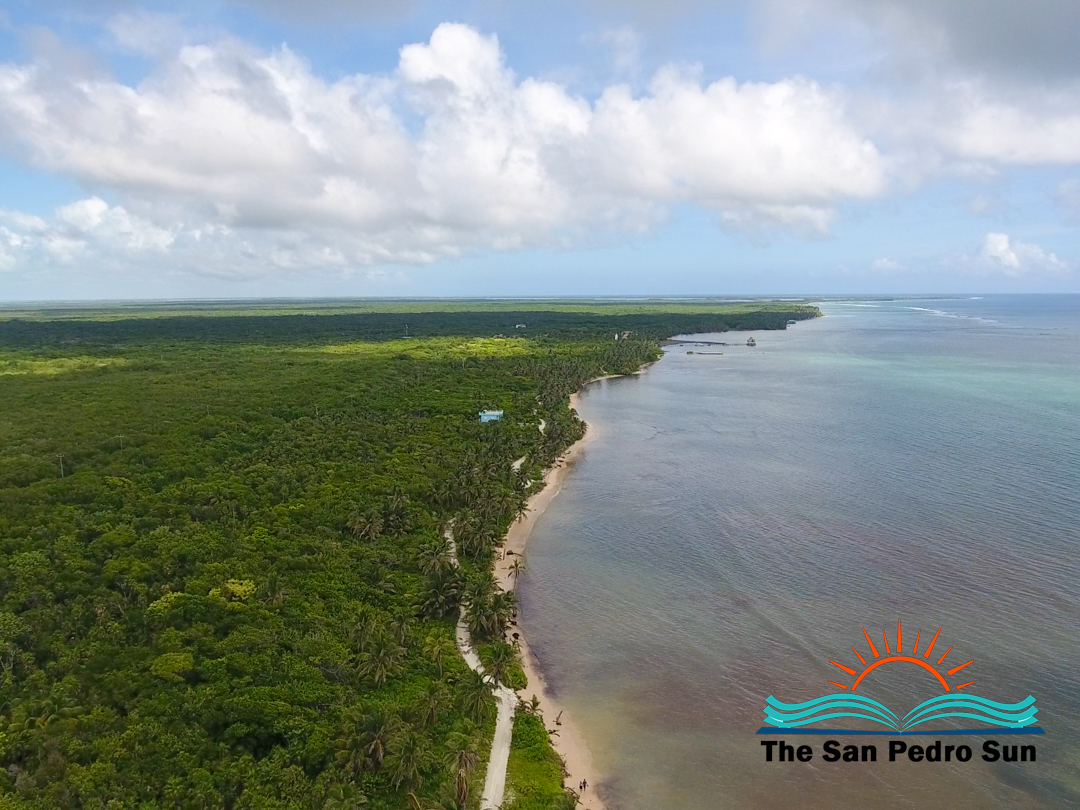Coastal erosion continues to pose a growing threat to San Pedro, Ambergris Caye, as gradual land loss affects fragile ecosystems, private properties, and public infrastructure. Over the past decade, monitoring efforts have documented slow but consistent changes along the island’s nearly 20-mile shoreline, with some areas showing more pronounced erosion than others. The data comes from the Sustainable Strategic Plan for Ambergris Caye report, which used satellite imagery and field studies to track sediment movement and coastal shifts.
According to a report by IDOM Consulting, Engineering, Architecture SAU, made in partnership with the Inter-American Development Bank, the primary forces driving erosion include natural coastal dynamics — such as wave action, tides, and currents — as well as rising sea levels associated with climate change. Tropical storms and hurricanes regularly accelerate the process, damaging shorelines and weakening the natural defences that protect the coastline.
Human activity has also contributed to the problem. Coastal development, including the construction of piers, seawalls, and dredging activities, has altered the natural sediment flow that traditionally replenishes beaches. The removal of mangroves for development is a significant factor, as these coastal plants provide critical protection by stabilizing soil, reducing wave energy, and supporting a healthy marine environment.
While erosion is a natural coastal process, its pace has increased in recent years in areas experiencing rapid development and limited shoreline regulation. The island is divided into five coastal zones (north, center north, center, south center, and south), each showing unique erosion and sand-accretion patterns. Northern zones with fewer built structures generally experience slower erosion, while the central and southern zones, where development is concentrated, are seeing faster shoreline retreat. In some locations, concrete seawalls have reduced erosion immediately in front of properties but redirected wave energy, causing increased sand loss in nearby areas.
Local environmental specialists working with the San Pedro Town Council emphasize that protecting mangroves and natural vegetation remains one of the most effective defences against climate change. “Mangroves are our best natural protection against land loss,” said one coastal researcher familiar with the island. “They hold the shoreline together, support biodiversity, and reduce the impact of waves and storms. Once they are gone, rebuilding that natural line of defense becomes extremely difficult.”
Experts believe that erosion will continue to challenge San Pedro’s long-term sustainability unless stronger coastal management and development guidelines are enforced. Recommended solutions include expanding mangrove protection initiatives, strengthening coastal building regulations, and utilizing more nature-based protection systems in conjunction with engineering when necessary.
With rising sea levels and increasingly unpredictable weather patterns, continued monitoring and proactive measures are essential to safeguard the island’s communities, environment, and tourism-driven economy.

Share
Read more

